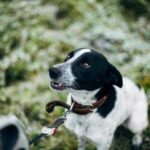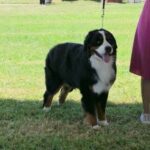The Iditarod Trail is one of the most challenging and prestigious sled dog races in the world, covering over 1,000 miles of rugged Alaskan terrain. Training snow dogs for this grueling competition requires dedication, expertise, and a deep understanding of canine athletes. In this article, we will explore the essential steps and considerations involved in preparing these remarkable animals for the ultimate test of endurance and teamwork.
The success of any team in the Iditarod race heavily relies on the physical capabilities and mental fortitude of the dogs. Therefore, selecting and training the right dogs is paramount to achieving victory. From choosing the suitable breeds to building a strong team dynamic, each aspect plays a crucial role in ensuring that the canine athletes are prepared for the challenges that lie ahead. Let us delve into the intricacies of preparing snow dogs for this extraordinary endeavor.
Amidst frigid temperatures and treacherous conditions, snow dogs must undergo rigorous physical conditioning to withstand the demands of long-distance travel. Their ability to pull a sled for miles on end hinges on their strength, stamina, and overall health. Moreover, sled training and exposure to environmental elements are vital components in honing their skills for navigating through snow-covered landscapes. Join us as we explore how mushers meticulously prepare their furry companions for this unforgiving journey across Alaska’s wilderness.
Selecting the Right Dogs
When it comes to training snow dogs for the Iditarod Trail, one of the most crucial steps is selecting the right dogs for the job. The breeds commonly used for this grueling race are Siberian Huskies, Alaskan Malamutes, and Greenland Dogs.
These breeds are known for their endurance, strength, and ability to thrive in cold weather conditions. When choosing individual dogs for the team, key characteristics to look for include a strong work ethic, a desire to pull, and good overall health.
It’s important to carefully assess each dog’s temperament and personality to ensure they will work well together as part of a team. Collaboration among the dogs is essential for success in the demanding environment of the Iditarod Trail. A harmonious team can make all the difference when it comes to navigating through challenging terrain and facing unpredictable weather conditions.
Training snow dogs for the Iditarod requires patience, expertise, and an understanding of canine behavior. By strategically selecting dogs with the right attributes and forming a cohesive team out of them, mushers lay a solid foundation upon which thorough physical conditioning and specialized sled training can be built. This careful selection process is a fundamental aspect of preparing both humans and their furry companions for this iconic race.
Building the Team
When it comes to building a team for the Iditarod Trail, selecting the right dogs is crucial. This means choosing breeds that are commonly used for the race, such as Alaskan Huskies, Siberian Huskies, and Alaskan Malamutes. These breeds are known for their endurance, strength, and ability to withstand the harsh conditions of the trail. Additionally, characteristics such as agility, stamina, and a strong work ethic are important traits to look for in a snow dog.
Once the breeds have been selected, it’s important to carefully choose the best team of dogs for the race. Each dog should complement one another in terms of their strengths and weaknesses. Teamwork among the dogs is essential, as they will need to work together cohesively to navigate the challenging terrain and weather conditions of the trail.
To prepare this team for the demands of the Iditarod Trail race, physical conditioning is key. This involves implementing a rigorous exercise and training regimen that includes both running and pulling activities. Proper nutrition and health considerations are also vital in ensuring that the dogs are in optimal physical condition for peak performance during the race.
- Choose breeds such as Alaskan Huskies, Siberian Huskies, or Alaskan Malamutes
- Look for characteristics like agility, stamina, and a strong work ethic
- Select a team of dogs that complement each other’s strengths and weaknesses
- Implement a rigorous exercise and training regimen
- Ensure proper nutrition and health considerations
Overall, building an effective team of snow dogs involves careful selection based on breed characteristics and physical conditioning to ensure optimum performance during the demanding Iditarod Trail race. The bond between musher and dogs also plays a significant role in forming a successful team ready to take on this challenging journey.
Physical Conditioning
Typically, a mix of aerobic and anaerobic exercises is incorporated into the training program for snow dogs. This includes activities such as running, swimming, and weight pulling to build muscle and stamina. The dogs are also put through interval training to simulate the stop-and-go nature of long-distance sled racing. It is important to gradually increase both the intensity and duration of these exercises in order to prevent injury and exhaustion.
Proper nutrition plays a vital role in maintaining the physical well-being of snow dogs during their training period. A diet consisting of high-quality protein, healthy fats, and complex carbohydrates is essential to support their energy needs. Supplements may also be added to ensure that they are receiving adequate vitamins and minerals. Regular visits to the veterinarian for health check-ups and vaccinations are necessary to monitor the overall health of the team.
Finally, rest periods are incorporated into the training schedule to allow the dogs’ bodies to recover from their workouts. Rest days are just as important as active training days in order to prevent burnout or injuries due to overexertion.
| Activity | Frequency |
|---|---|
| Running | 3-4 times per week |
| Weight Pulling | 2-3 times per week |
| Swimming | 1-2 times per week |
| Dietary Supplements | As needed under veterinarian guidance |
Sled Training
Training snow dogs for the Iditarod Trail involves rigorous physical conditioning to prepare them for the demands of pulling a sled over long distances in harsh winter conditions. Here are some key aspects of sled training for snow dogs:
- Teaching the dogs to pull a sled: Sled training begins with introducing the dogs to the equipment and familiarizing them with the sensation of pulling a load. This process involves gradually increasing the weight of the sled as the dogs build strength and endurance.
- Building endurance and strength for long-distance travel: Once the dogs are comfortable pulling a sled, training focuses on building their stamina and muscle strength. This may include regular runs over varying terrain and increasing distances to simulate race conditions.
In addition to physical conditioning, environmental preparation is also crucial for sled training. It is essential to expose the dogs to cold weather and snow conditions, as well as familiarize them with specific race course challenges they may encounter during the Iditarod Trail.
Ultimately, successful sled training for snow dogs requires patience, consistency, and a deep understanding of each dog’s abilities and limitations. The bond between musher and dogs is critical in guiding them through the demanding training process, ensuring that they are fully prepared for the challenges of the Iditarod Trail.
By prioritizing proper sled training alongside other aspects of preparation, mushers can ensure that their team of snow dogs is ready to tackle the grueling race with determination and strength.
Environmental Preparation
When it comes to training snow dogs for the Iditarod Trail, environmental preparation is a crucial aspect that cannot be overlooked. The race takes place in the harsh and unforgiving Alaskan wilderness, where extreme cold weather and heavy snowfall are common. Therefore, exposing the dogs to these conditions and familiarizing them with the race course is essential for their success.
Exposure to Cold Weather and Snow Conditions
One of the key elements of environmental preparation is getting the dogs accustomed to the cold weather and snow conditions they will encounter during the race. This includes spending time outdoors in low temperatures, as well as training runs in snowy terrain. Gradually increasing their exposure to these environments will help them develop the necessary endurance and resilience to thrive in such conditions.
Familiarizing Dogs With the Race Course
Another important aspect of environmental preparation is introducing the dogs to the race course. This can be done by taking them on training runs along sections of the trail, allowing them to become familiar with its terrain and challenges. By doing so, they can learn how to navigate difficult areas and adapt to different types of surfaces, such as packed snow, loose snow, ice, or gravel.
By ensuring that snow dogs are well-prepared for the specific environmental conditions they will encounter in the Iditarod Trail, mushers can increase their chances of success in this grueling race. Taking the time to properly expose and familiarize these incredible animals with their surroundings demonstrates an understanding of what it truly means to prepare a team for this epic journey.
Mental Preparation
Training snow dogs for the Iditarod Trail not only involves physical conditioning but also mental preparation. Obedience and focus are crucial for the success of the team during the race. One important aspect of mental training for snow dogs is teaching them to remain calm and obedient in various situations that they may encounter on the trail. This includes exposure to loud noises, rough terrain, and unexpected encounters with wildlife.
Another key element of mental preparation for snow dogs is training them to handle distractions. During the race, there will be other teams of dogs, spectators, and a variety of environmental stimuli that can distract the dogs from their task. Teaching them to remain focused on their duties despite these distractions is essential for a successful performance in the Iditarod.
In addition to obedience and focus, mental preparedness also involves training the dogs to handle unexpected situations. This includes teaching them commands and signals to navigate obstacles or hazards along the trail. It also involves acclimating them to challenging weather conditions, such as blizzards or whiteout conditions where visibility is limited.
| Mental Aspect | Training Technique |
|---|---|
| Calmness and Obedience | Exposure to loud noises and rough terrain; consistent commands and rewards |
| Handling Distractions | Gradual exposure to various stimuli; reinforcing focus through training exercises |
| Dealing with Unexpected Situations | Teaching specific commands for navigating hazards; simulating extreme weather conditions |
Pre-Race Logistics
Preparing for the Iditarod Trail involves more than just training the snow dogs physically and mentally. The logistics of getting ready for the race are just as important to ensure a successful and safe journey. From packing essential equipment to final training and conditioning, here is how mushers prepare for the pre-race phase of the Iditarod Trail.
Packing and Preparing Equipment for the Team
One crucial aspect of pre-race logistics is making sure that all necessary equipment and supplies are packed and ready for the journey. This includes sleds, dog booties, camping gear, food, first aid kits, and other essentials for both the musher and the dogs. Meticulous preparation is essential to ensure that nothing vital is overlooked before embarking on the challenging race.
Final Training and Conditioning Before the Race
In the weeks leading up to the Iditarod Trail, mushers focus on fine-tuning their team’s training and conditioning. This includes specific workouts to build endurance, strength, and speed. It also entails honing teamwork skills among the dogs, as well as mental preparedness for long hours on the trail. Additionally, final health check-ups are conducted to ensure that all dogs are fit and ready for the demanding journey ahead.
Special Attention to Weather Forecasting
Weather conditions play a significant role in determining race strategies and timings. Mushers pay close attention to weather forecasts in order to make informed decisions regarding when to start, when to rest, or when a storm might be approaching during their journey. This can heavily impact pre-race preparations as adjustments need to be made according to imminent weather changes.
Conclusion
In conclusion, preparing snow dogs for the challenging Iditarod Trail is no easy feat. It requires dedication, hard work, and a deep understanding of the physical and mental endurance needed for such a demanding race.
From selecting the right dogs with the necessary characteristics to building a strong team dynamic, each step of the training process plays a crucial role in ensuring success on the trail. It is important to note that the bond between musher and dogs is an integral part of this preparation, as it fosters trust and synergy that are essential for completing the race.
The physical conditioning of snow dogs is also paramount in their training, with a focus on rigorous exercise regimens and proper nutrition. Introducing them to sled pulling and familiarizing them with cold weather conditions are integral aspects of their preparation. Additionally, mental preparation for obedience and focus during the race is just as crucial as their physical training. Incorporating unexpected situations and distractions into their training regimen ensures they are well-prepared for anything they may encounter during the Iditarod.
Overall, successfully training snow dogs for the Iditarod Trail requires meticulous planning, unwavering commitment, and genuine care for these remarkable animals. The partnership between musher and dogs is rooted in mutual respect and love for what they do. As such, it is essential to recognize not only the dedication put forth by trainers but also the exceptional capabilities of these incredible canine athletes as they undertake one of the most grueling races in existence.
Frequently Asked Questions
How Do Sled Dogs Learn to Pull the Sled?
Sled dogs learn to pull the sled through a combination of instinct, training, and experience. They observe older and more experienced dogs and gradually learn the commands and signals from their musher.
How Long Is Sled Dog Training?
The length of sled dog training can vary depending on the individual dog and its ability to adapt to the tasks. Some dogs may be ready for competition in as little as one year, while others may require several years of training.
What Do Iditarod Sled Dogs Eat?
Iditarod sled dogs have specialized diets that typically consist of high-energy foods such as a mix of high-quality kibble, meat, fish, or fat to provide them with the necessary calories and nutrients for endurance racing. Additionally, they may also receive supplements and vitamins to support their overall health and performance on the trail.

Welcome to the blog! I am a professional dog trainer and have been working with dogs for many years. In this blog, I will be discussing various topics related to dog training, including tips, tricks, and advice. I hope you find this information helpful and informative. Thanks for reading!





